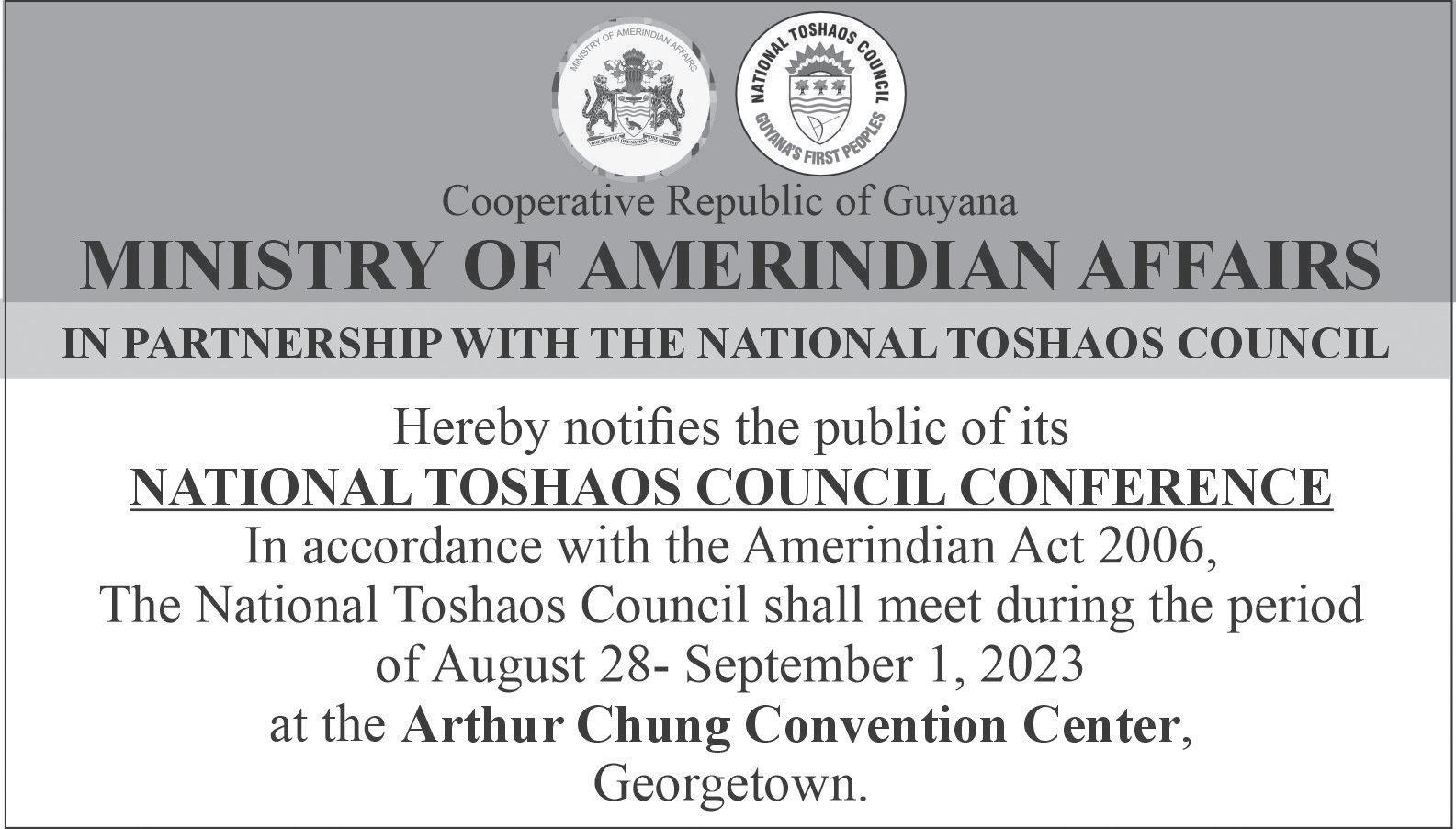
5 minute read
Two steps forward
A recently-concluded T10 tape ball tournament brought much excitement on and off the field over the past several weeks. It demonstrated what is possible when stakeholders come together to support sports development in Guyana.
The tournament featured teams from nine of the 10 administrative regions. The players were drawn from communities across the country, hoping to become the best T10 tape ball XI in the country. And President Dr. Irfaan Ali’s ‘One Guyana’ initiative was a huge focus here.
Advertisement
I managed to catch several games and was my happiest self over the days I went to the tournament. It was refreshing seeing so many people flock to the grounds for the shortest format of the game and it was exciting seeing some of the timeless Guyanese cricketing stars take to the field again. At the end of it all, the Eccles All-Stars emerged as the inaugural champions.
There’s no doubt about my love for cricket in any shape or form, but I won’t spend the next several paragraphs gushing over the matches and how happy I was. Instead, there are a few specific things I’d like to point out.
The tournament’s first noteworthy aspect was its sheer public support. Whether it was the Everest Cricket Club Ground or the Enmore Community Centre Ground, venues were packed on the weekends when the matches were being played. And it should go without saying that attracting enough people to fill a set of stands at the National Stadium is nothing ordinary. This tells me that there is an appetite for more cricket and sports activities in Guyana (the support at the Guyana Cup horse racing event the day after the T10 finals further evidences this, in my opinion). There are logistics and human resource deliberations that must take place, but I believe a steady stream of big, or at least well-supported, sporting events could give people (like music) more things to look forward to and possibly, make the sport sector more sustainable.
That brings me to my second point. The tournament could not have been executed as well as it was if there wasn’t sound state and private sector backing as well. President Ali, for example, was the tournament’s patron, and that, I believe, established much goodwill and interest. He decided to play in charity matches and the private sector was able to raise at least $17.5 million for 11 orphanages, animal welfare groups, and other charitable organisations. If sporting events aren’t sustainable enough on their own (including by bringing in their funds), support is needed from other stakeholders to fuel the development of the sports persons and their games. That means sponsoring athletes when they need to travel to distinguish themselves and represent Guyana, or paying it forward at home so our sportspersons don’t have to grapple with less-than-optimal facilities. It doesn’t require a doctorate to know that continued support, in cash and kind, translates to better performances all around.
There are more schmaltzy takeaways from the tournament too. As I alluded to earlier, it was part of the President’s One Guyana agenda. At its core, that agenda seems to be pushing for Guyanese to join hands and work towards a common goal. In a big-picture sense, that common goal must be developing the nation and its people. Sports have been accepted- perhaps since time immemorial- as a way of bringing people together and galvanising their focus toward achieving a common goal. So as the President pursues his One Guyana agenda, I’m sure he is already seeing how he can harness sports to aid his pursuits.
Still, there’s sobering news yet. Even though we took two steps forward, it seemed as though we had to take one step back.
Earlier in August, it was reported that the Athletics Association of Guyana (AAG) had to cancel the National Senior and National Junior Athletics Championships due to the unavailability of an appropriate venue.
It seemed as though a series of unfortunate events prevented these championships from being held and this conundrum served as a reminder of why ongoing investments in sport facilities across the country are crucial. It also demonstrates how much more we should focus on supporting our sportspersons. Yes, positive developments make me hopeful for the future, but we cannot wish away the very real issues we grapple with. I’m thrilled that this new T10 tournament attracted so much support. I would be overjoyed if we kept that same energy all around.
If you would like to discuss this column or any of my previous writings, please feel free to contact me via email: vish14ragobeer@gmail.com












It’s about time we include ‘green skills’ alongside the dialogue of employment

DAY by day, we’re visually seeing and even experiencing the effects of climate change. It’s not a myth or conceptual idea; it’s real, and every country has its own challenges and problems because of it. Don’t believe me? Look for old pictures of Guyana’s coastlines and you’ll see the drastic difference when comparing it to the current ones. Ever noticed old structures of what used to be old seawalls in Guyana? Or, have you noticed the additional heightened structures that were made to the Kingston seawalls? These weren’t made by accident. They were made because our coastlines are below sea levels and unfortunately, every year, our oceans increase their volume by 0.13 inches. That’s one of our country’s many struggles with climate change and like many other countries worldwide, we’re desperately looking for solutions to help.
The term “Green Skills’’ might be unfamiliar to many in terms of its use in language. Nonetheless, what that term symbolises has been put into practice by many people worldwide. Green skills are the abilities, attitudes and understanding needed to develop and live in a sustainable society with efficient resources. If we are to change how we utilise new sustainable resources, we will need specific skills on how to apply such. There is usually a structural change when this happens in economies. This creates “green jobs’’ or alters existing jobs by fitting greener solutions into play. It’s also important to note that there’s a difference between “green skills” and “green jobs’’. Green jobs are career-centred, specialised roles that are dedicated to improving the environmental outcomes around us. There needs to be some sort of revision and restructuring on all employment levels.
A low-carbon, “green” economy is a must in this day and age. The Guyanese workforce ought to be trained in the specifics required to do their part essentially. If we lack these necessary skills, obviously we will be unable to develop and support a sustainable economy. The idea of a green economy transition will be dragged out. This can even cause structural unemployment. As we implement policies and regulations to accommodate a green economy, we should also do the same for our workforce. Green skills aren’t only meant to be environmentally sustainable but also innovative. How can we think and create unique ways to utilise our waste products? This includes Guyanese mechanics learning how to maintain electric vehicles. It includes farmers in the Corentyne using AI technology to reduce waste. It includes Human Resources departments using alternatives to document instead of paper.

Every country has an ideal plan to create a new “green” economy for their citizens—it requires “green skills” to get there. As such, each country will desire different sets of skills based on their ideas of development and the directions the country in question wishes to follow. Only 23% of UK students are aware of “green skills”, according to WSP. With that in mind, it’s an evolving conceptual idea and I’m hopeful that it reaches within the walls of our local classrooms soon so that students can be aware of an important aspect that may be required of them in years to come. Going “green” requires much more from all of us than fancy slogans and community engagement—it’s real work that requires commitment, knowledge and practice. We ought to find ways to allow our human systems to work with Mother Nature, not against it—if we’re hoping to slow down the rate of climate disasters.











